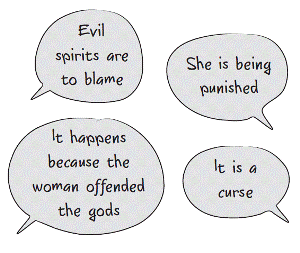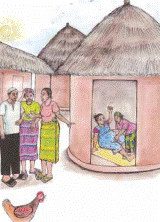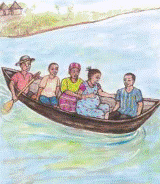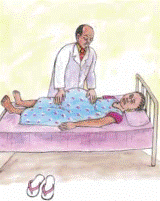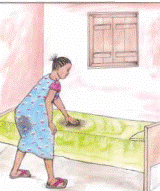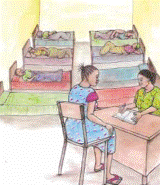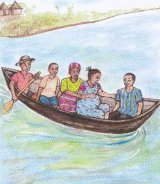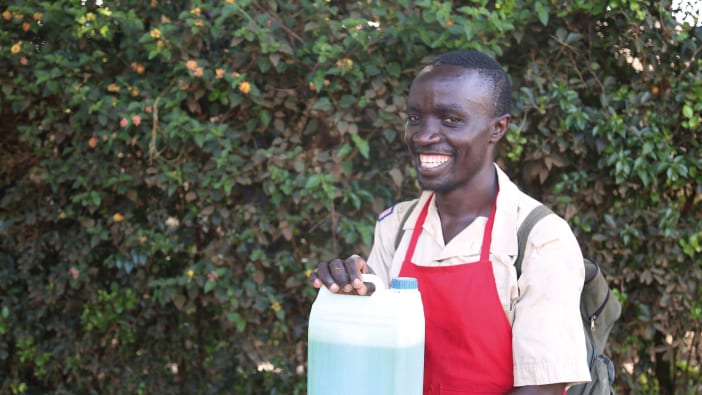- Have you heard any of these explanations for fistula? What do you think about them?
- Is it important to address these beliefs as part of caring for women with fistula?
What about those who cannot be healed?
A small number of women cannot be healed, even after many attempts at surgery. The Fistula Hospital in Addis Ababa, Ethiopia, sets an example for how to care for these women. Desta Mender – which means ‘village of joy’ in Amharic – is a community of women who need long-term care. A number of them rely on special bags provided by the hospital that collect their bodily waste. They are able to live peacefully together without the fear of stigma. They can learn new skills, and many become carers and helpers to the nurses at the hospital. In fact, all the nurses’ helpers are women with fistula who need long-term care – around 100 of them.
Traumatic fistula
Obstetric fistula develops because of the baby’s head pressing on the birth canal for a long period of time during labour. However, a hole in the birth canal may also be a result of direct tearing caused by sexual violence. There are many cases of traumatic fistula in war-torn areas where rape is used as an illegitimate weapon of war.
A woman with a traumatic fistula may need special encouragement to seek help. She is likely to be experiencing stigma and shame. She may be very fearful as her condition is a constant reminder of the abuse she suffered.
There is hope, because like obstetric fistula, traumatic fistula can be cured by surgery.
Finding help
- Do you know where the nearest hospital for treating fistula is? Can a local health worker tell you?
- If the nearest hospital is far away, can you find out if medical staff trained in fistula care are able to travel nearer? Can you approach the local health authority to request action?
- What can be done to help women with fistula travel to find treatment?
Fatu's story
A picture book telling Fatu’s story is used by women working with Health Poverty Action as fistula advocates in Sierra Leone. Without words, the pictures show how Fatu experienced a long labour before seeking medical help, the effect fistula had on her life, how she found a cure and how she decided to help others like her.
Like Fatu, the fistula advocates are women who have lived with fistula and undergone surgical repair. Simple surgery to repair the hole can cure up to 90 per cent of women with fistula, but in many places surgery is not available. This means it is all the more important to share the message of prevention. The advocates use Fatu’s story to talk to people in their communities about fistula, creating awareness of how it is caused, how to prevent it and how to access treatment.
The picture books are designed for the advocates to carry with them so they can share the message as part of their daily lives. They have used the books to start discussions in market places, schools, churches, mosques and at community gatherings and even on public transport. They also talk to pregnant women at health centres and during antenatal clinics to emphasise the importance of seeking health care at the hospital when labour starts, rather than waiting until there is a problem.
The women say that telling Fatu’s story has led to:
Regina Bash-Taqi, Country Director, Health Poverty Action, Sierra Leone [email protected]




